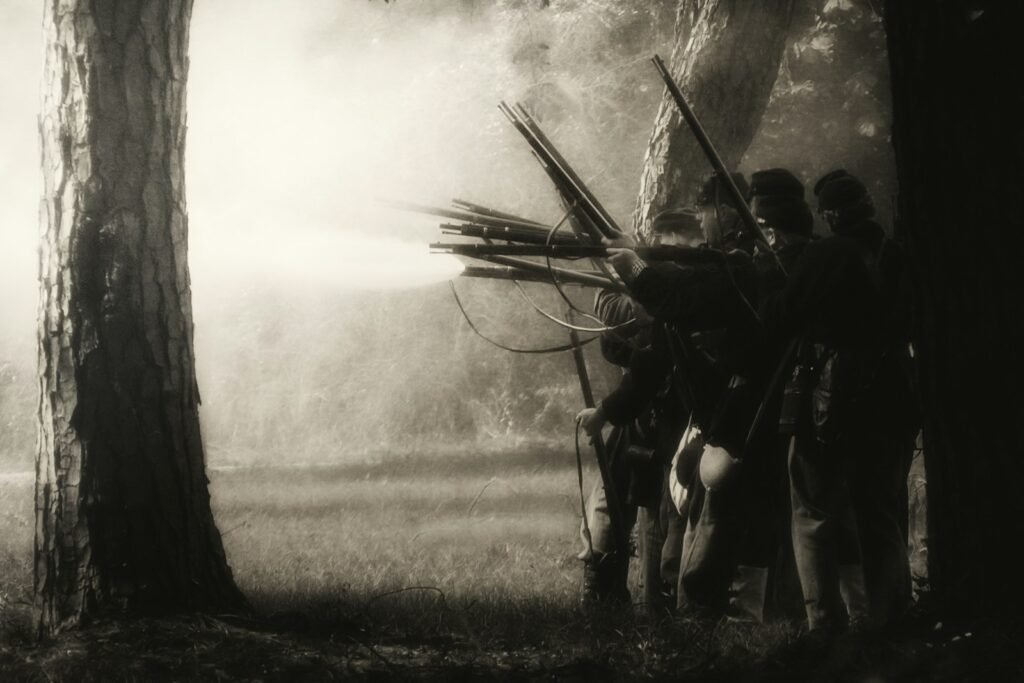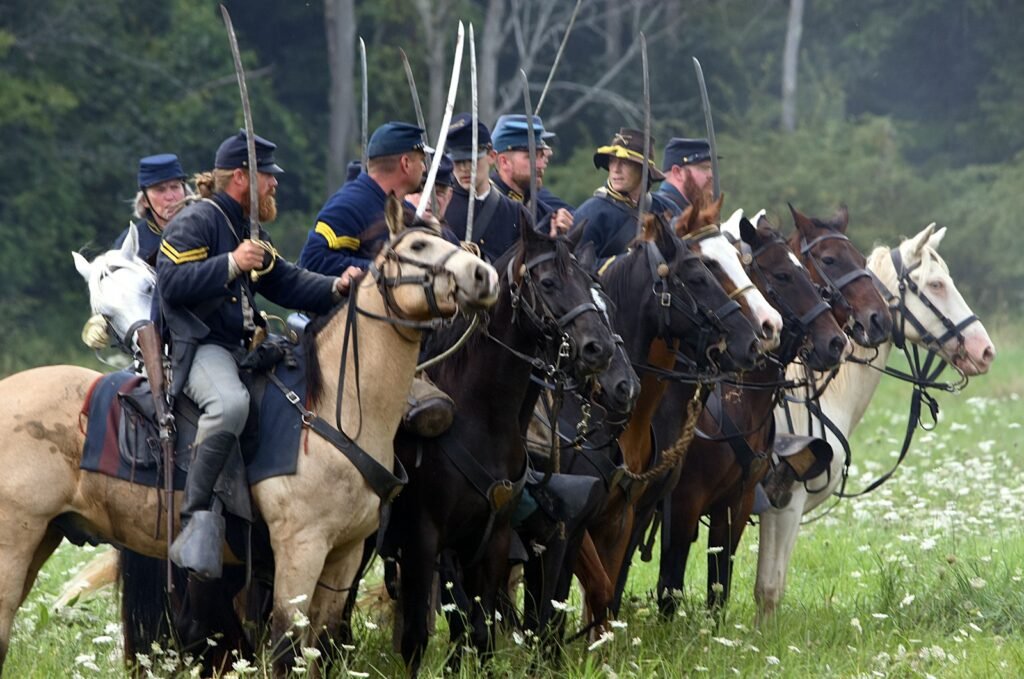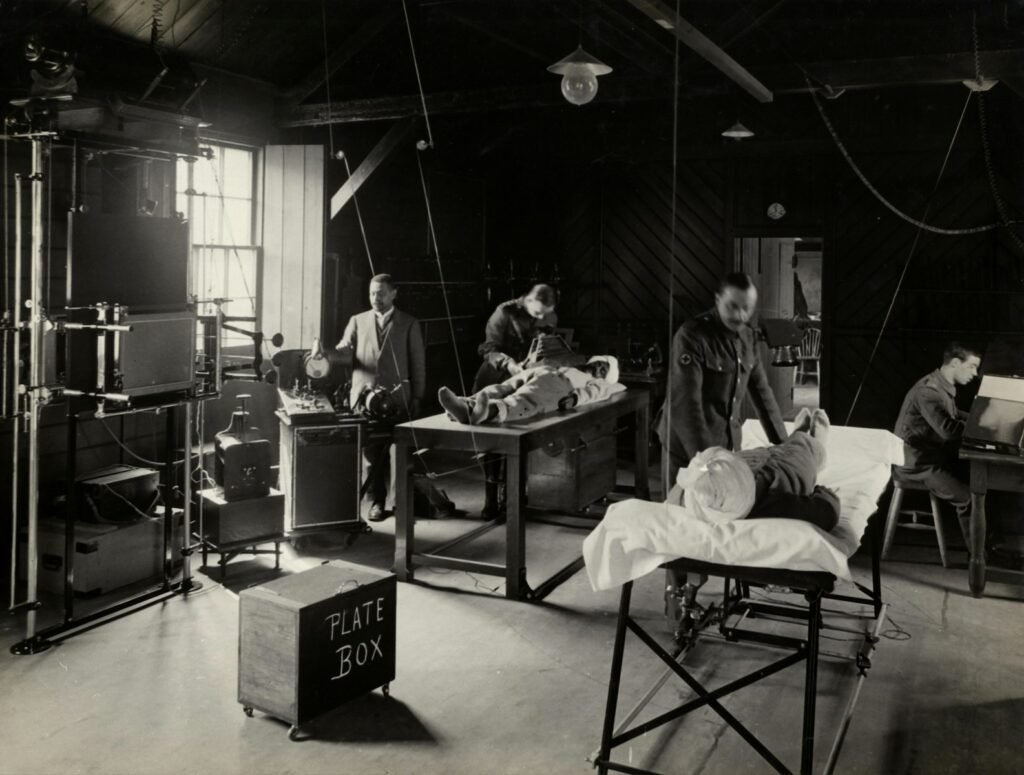
Early Firearms Technology
Firearms in the early days were akin to the smartphones of today – a must-have for everyone! The rapid pace of innovation left people breathless, with new inventions popping up faster than you could blink. It was a time of exhilaration, where individuals vied to outdo each other with the most cutting-edge gun designs.
One prominent individual, Benjamin Franklin, once mused, “God made men equal, Colonel Colt made them equally armed.” And how true his words rang! The advent of firearms revolutionized warfare by evening the odds. Suddenly, brawn alone no longer reigned supreme – intellect and accuracy took center stage on the battlefield. It was as if one had brought a knife to a gunfight, quite literally!
Revolutionizing Warfare
Bullets zipping through the air, cannons roaring in the distance, and muskets blazing off one after another – such was the cacophony of war that reverberated across battlefields in the 18th century. The transformation of firearms technology played a crucial role in reshaping the way wars were waged, forever shifting the tides of history. As an ardent aficionado of US history, I am entranced by how advancements in weaponry sculpted the strategies and outcomes of pivotal conflicts.
From the muskets wielded in the American Revolutionary War to the rifles brandished during the Civil War, firearms grew more precise, quicker to reload, and more lethal with each passing era. General George Washington’s famous words resonate deeply: “Firearms stand next in importance to the Constitution itself. They are the American people’s liberty teeth and keystone under independence.” These sentiments hold true as firearms not only altered warfare but also impacted America’s fundamental freedoms. With battles escalating in ferocity and casualties mounting, military tactics had to adapt to confront this new reality of firearms dominating on battlegrounds.
Advancements in Firearm Design
The 18th century marked a crucial turning point in the evolution of firearm technology, reshaping the very nature of warfare itself. Delving into the annals of history, one cannot help but be astounded by the sheer brilliance and resourcefulness that went into crafting these instruments of destruction. Amongst the myriad innovations that emerged during this era, rifling in muskets stands out as a game-changer, elevating accuracy and range to unprecedented levels.
General George Washington’s profound words echo through time, underscoring the transformative impact that superior firearm design had on military tactics back then. An army led by a formidable leader is indeed a force to be reckoned with, regardless of its size or composition. The dawn of interchangeable parts championed by Eli Whitney further revolutionized firearms production, ushering in an era where reliability and ease of repair became paramount on the battlefield.
Reflecting on these advancements through the lens of US history evokes a sense of awe at how they shaped the course of nations. As Benjamin Franklin sagely pointed out, preparation is key to success or rather, failure to prepare is tantamount to preparing for failure. It is clear that advancements in firearm design played an instrumental role in arming armies for the conflicts that defined this tumultuous epoch.
Impact on Battle Tactics
The impact of firearms on battle tactics throughout history is akin to navigating a labyrinth with ever-changing paths. Consider the Revolutionary War, where the British Redcoats clashed with the resourceful American Patriots. Armed with muskets, soldiers grappled with the challenge of coordinating their shots amidst the chaos of combat. General George Washington astutely observed, “Discipline is the heart of an Army. It transforms small numbers into a formidable force; it secures victory for the weak and garners respect from all.” In this era of primitive firearms, strategic acumen was paramount- knowing when to stand firm and when to push forward could mean triumph or disaster.
Zoom ahead to the Civil War era, where rifled muskets revolutionized warfare once more. These weapons boasted greater accuracy and range, reshaping battlefield dynamics entirely. General William Tecumseh Sherman bluntly declared, “War is brutal. Attempts at taming it are futile. The more ruthless it is, the sooner it concludes.” With rifles proving deadlier than ever before, soldiers were compelled to overhaul their strategies accordingly. Guerrilla tactics and trench warfare rose in prominence as troops sought refuge from the lethal precision of modern firearms. The relentless progression of firearm technology continuously challenged military leaders to reassess their battle schemes, rendering adaptability a critical factor for success in wartime engagements.n
Innovations in Gunpowder
The evolution of gunpowder during the 18th century was a perplexing journey filled with bursts of innovation. As a fervent follower of US history, delving into the intricacies of gunpowder technology feels like stumbling upon a hidden treasure trove. The refinement of gunpowder composition played a pivotal role in revolutionizing the effectiveness of firearms on the battlefield.
One particularly striking advancement during this era was the development of more potent gunpowder formulas. Just as Benjamin Franklin eloquently put it, “Among the changing months, May stands confest, the sweetest, and in fairest colors dressed.” In a similar fashion, the metamorphosis of gunpowder brought about a newfound potency to weapons, increasing their range and destructive capabilities significantly. The meticulous experimentation and fine-tuning conducted by esteemed chemists at that time propelled firearms to unprecedented levels of lethality, forever altering the landscape of warfare.
Role of Rifles in Combat
The 18th century saw a bewildering array of advancements in firearms technology, and the emergence of rifles as a game-changer on the battlefield was no exception. With their elongated barrels and mysterious spiral grooves, rifles brought about a seismic shift by providing enhanced precision and range compared to traditional muskets. General George Washington once cryptically mused, “Aim small, miss small,” underscoring the newfound accuracy that rifles introduced to the art of war.
Rifles wielded an enigmatic influence on warfare strategies during this era. The uncanny ability of a proficient marksman to eliminate enemy combatants from afar could throw the enemy’s formations into disarray and dampen their spirits. As Benjamin Franklin sagely observed, “An army of deer led by a lion is more formidable than an army of lions led by a deer.” Riflemen emerged as prized assets on the battlefield, capable of unleashing chaos with their lethal precision and potentially altering the course of battle in one swift burst.
Development of Handguns
Immersing ourselves in the enigmatic realm of 18th-century firearms, one is immediately struck by the profound impact handguns had on the trajectory of history. From the elegant flintlock pistols to the formidable Kentucky long rifles, these compact weapons embodied power, precision, and an unwavering American spirit.
In the midst of chaotic battles, a finely-crafted handgun could mean the difference between triumph and defeat. As General George Washington astutely observed, “As we embark across the Delaware, let each man carry his trusty pistol; for in times of turmoil and conflict, it is he who is armed that emerges victorious.” The metamorphosis of handguns from clunky muskets to sleek pistols revolutionized warfare tactics, enabling soldiers to engage their adversaries swiftly and accurately as never before. With each expansion of frontiers and escalation of conflicts, it became increasingly evident that handguns were instrumental in shaping the fate of a nation.
Evolution of Cannons
The transformation of cannons in warfare throughout the 18th century stood as a crucial turning point in military history, reshaping the dynamics of battles and influencing the tactics employed by armies. With each stride in technology, cannons grew more potent and precise, evolving from basic offensive tools to intricate artillery pieces capable of wreaking havoc on enemy formations with pinpoint accuracy. The emergence of various types of cannons – field guns, howitzers, mortars – brought versatility to the battlefield, offering commanders a plethora of choices to adapt to diverse tactical scenarios.
Prominent figures like Benjamin Franklin grasped the importance of cannons in war, declaring that “A well-regulated militia, composed of the people, trained to arms, is the best and most natural defense of a free country.” This statement underscores the critical role played by military preparedness and emphasizes how artillery – including cannons – served as guardians safeguarding the freedoms and rights of early American settlers. Cannons were not just tools for devastation; they symbolized authority and determination, striking fear into fs while bolstering confidence among those who wielded them. The evolution of cannons during this era laid down the groundwork for contemporary artillery practices and forever altered warfare’s landscape- leaving an indelible mark on battlefields and historical narratives alike.


